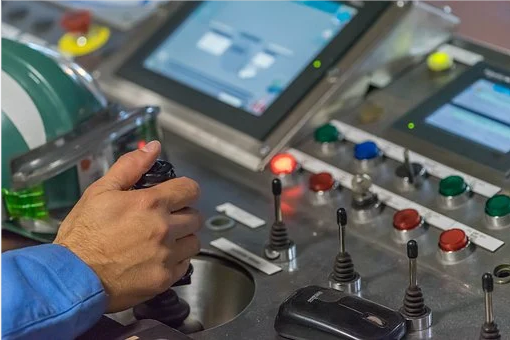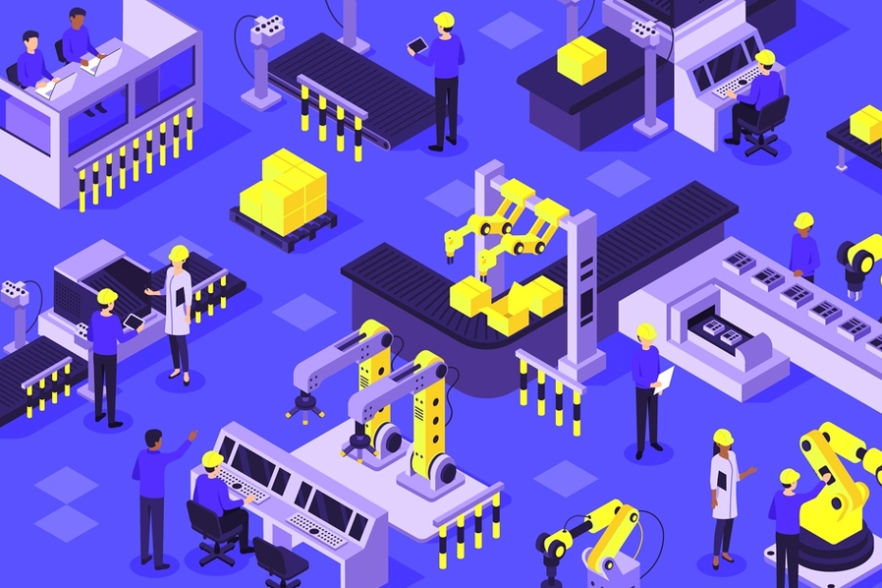创新背景
现代科学技术对生产生活的影响直接作用于经济模式的变化以及劳动就业的发展,自动化和机器人改变许多非复杂工作类型的就业形式,对于劳动力市场和收入状况影响甚大。
创新过程
麻省理工学院经济学家Daron Acemoglu与波士顿大学Pascual Restrepo 合著的新研究《解开技能偏见:自动化和新任务》于2020年5月发表在《美国经济学会:论文与论文集》,研究表明,以1987年为转折点,自动化对劳动力市场和收入不平等的影响比以往的研究所呈现出的要大,自动化导致的工作机会不再被同等数量的类似工作场所机会所取代。

研究人员表示,自动化对于理解不平等动态至关重要。在采用自动化的行业中,1947年至1987年的平均失业率达到17%,平均再就业率为19%。而从1987年到2016年,失业率为16%,复职率仅为10%。技术带来许多使简单技能受益的新就业机会,但在自动化和机器人到来以后,他们的失业率在增加,复职率却不断减少。研究表明,美国1993年到2007年,每个新机器人都取代了3.3个工作岗位。
研究构建了一个表现技术对劳动力市场影响的模型,同时通过使用来自44个相关行业的经验数据来测试模型的强度。模型强调技术变革带来技能偏向,即技术发展使复杂技能行业受益更多,简单技能行业的就业则越来越难。但研究人员认为,模型所隐含的经济差距还是比较良性,在自动化的时代里,简单技能行业的就业者很难获得利益。自动化影响下,行业技能的要求越来越低,就业者的生产率增长在减少,实际工资也在下降。

技术发展对于就业和劳动的冲击巨大,收入差距也不断增大。劳动和物质保障对于自动化时代的简单技能就业者越来越不成正比,机器人替代了许多简单劳动力的岗位。改善这一问题需要从就业者自身入手,简单劳动力被取代,复杂劳动力过于专业,就业者就需要在新的技术行业中寻找自己的就职机会。Acemoglu认为,机器取代人力工作的现象自19世纪以来一直在持续,但技术对就业的负面影响并非不可避免。解决这一问题需要寻找更多的方法来生产提高就业的技术,而不是取代就业的创新。即使是机器人和自动化时代,也无法离开最初的生产过程和人类社会所需要的人情温度。
研究探寻了法国制造业引入机器人以后的商业动态和劳动力变化:在2010年至2015年的法国,采用机器人的公司提高了生产力,但却雇佣了更多的工人。制造业机器人使用量增加了20个百分点,导致全行业就业率下降了3.2%。然而,对于在此期间采用机器人的公司来说,员工的工作时间增加了10.9%,工资也小幅上涨。

那些确实在制造过程中增加了机器人的公司流向工人的收入降低了大约4到6个百分点。但是因为对技术的投资推动了更多的增长和更多的市场份额,公司总体上增加了更多的工人。相比之下,没有增加机器人的公司认为劳动力份额没有变化,竞争对手采用机器人的比例每增加10个百分点,这些公司的就业率就会下降2.5%。

技术导致就业岗位被取代的同时也带来了新的岗位,市场份额和新的技术需求源源不断地产生新的就业职位,劳动力的升级转型是应对自动化时代的刚需,从群体到个人,劳动力生产者需要不断根据技术的发展和推广程度进行提升自我,提高就业竞争力。而行业、政府和国家也需要挖掘自动化技术影响的行业中的就业岗位和机会,充实社会保障,完善就业引导政策,在技术发展的同时促进劳动力就业和复职。
创新关键点
从自动化带来的收入差距和失业问题看到新技术带来的新岗位就职机会,转变求职方向推动劳动力转型升级。
From the negative impact of automation, the direction of labor employment is considered in reverse
A new study, published in May 2020 in The American Economic Association: Proceedings and Proceedings, co-authored by MIT economist Daron Acemoglu and Boston University Pascual Restrepo, shows that the impact of automation on labor markets and income inequality is greater than previous studies, taking 1987 as a turning point. Automation results in job opportunities that are no longer replaced by an equal number of similar workplace opportunities.
The researchers say automation is critical to understanding inequality dynamics. In industries that adopt automation, the average unemployment rate between 1947 and 1987 reached 17 percent and the average reemployment rate was 19 percent. From 1987 to 2016, the unemployment rate was 16 percent and the reinstatement rate was only 10 percent. Technology has brought many new jobs that benefit simple skills, but with the arrival of automation and robotics, their unemployment rates are increasing and their reinstatement rates are decreasing. Studies have shown that in the United States from 1993 to 2007, each new robot replaced 3.3 jobs.
The study constructed a model of the impact of performance technology on the labor market, while testing the strength of the model by using empirical data from 44 related industries. The model emphasizes that technological change brings about a skills bias, that is, technological development benefits complex skill industries more, and simple skill industries are becoming more difficult to employ. But the researchers believe that the economic gap implied by the model is still relatively benign, and in the era of automation, it is difficult for employees in simple skill industries to obtain benefits. Under the influence of automation, the requirements for skills in the industry are getting lower and lower, the productivity growth of the employed is decreasing, and real wages are falling.
The impact of technological development on employment and labor is enormous, and the income gap is also increasing. Labor and material security are increasingly disproportionate to the simple skilled workers in the era of automation, and robots have replaced many simple labor jobs. Improving this problem requires starting with the employed themselves, the simple labor force is replaced, the complex labor force is too specialized, and the employed need to find their own employment opportunities in the new technology industry.
Acemoglu argues that the phenomenon of machines replacing human work has continued since the 19th century, but the negative impact of technology on employment is not inevitable. Solving this problem requires finding more ways to produce jobs-enhancing technologies, rather than replacing employment innovations. Even the era of robotics and automation cannot be separated from the initial production process and the human temperature required by human society.
The study explores business dynamics and labor changes since the introduction of robots in French manufacturing: in France from 2010 to 2015, companies that adopted robots increased productivity but hired more workers. The use of robots in manufacturing increased by 20 percentage points, resulting in a 3.2% drop in industry-wide employment. However, for companies that adopted robots during this period, employees' working hours increased by 10.9 percent, and wages rose slightly.
Companies that do add robots to the manufacturing process have reduced the flow of income to workers by about 4 to 6 percentage points. But because investment in technology has driven more growth and more market share, companies have added more workers overall. By contrast, companies that haven't added robots see no change in their share of the workforce, and for every 10 percentage point increase in competitor adoption of robots, their employment rates drop by 2.5 percent.
Technology leads to the replacement of jobs but also brings new jobs, market share and new technology demand continues to produce new jobs, the upgrading and transformation of labor is to cope with the rigid needs of the automation era, from groups to individuals, labor producers need to constantly improve themselves according to the degree of development and promotion of technology, improve employment competitiveness. The industry, the government and the country also need to tap the jobs and opportunities in the industries affected by automation technology, enrich social security, improve employment guidance policies, and promote labor employment and reinstatement while technological development.
智能推荐
劳动与社会保障创新思维 | 认知行为疗法有助于改善贫困人群的身体健康和经济状况
2022-08-24借助CBT治疗研究心理健康对贫困人群的影响,拓展劳动和社会保障管理的途径。研究证明了心理健康对消除贫困的积极作用,有助于扩展消除贫困的路径以及心理研究。
涉及学科涉及领域研究方向教育管理创新思维 | 以过程为导向教授拉丁语有助于探究历史与社会
2022-07-29以过程为导向,将学生带出课堂去了解拉丁语背后隐含的社会和历史意义,促使学生敢于质疑探索经典文化,探究现代社会问题。
涉及学科涉及领域研究方向管理学创新思维 | 极端高温对劳动者影响的探究
2022-07-28从气候变化导致的极端环境出发,探索环境对劳动者生存和社会经济的影响。
涉及学科涉及领域研究方向健康服务与管理创新思维 | 数字化健康服务创新健康服务与管理模式
2022-06-29产业融合打造数字化健康服务管理新模式,促进行业发展。
涉及学科涉及领域研究方向